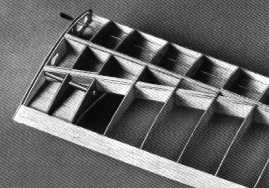 The Graupner Cirrus was produced in 1969, and
was a milestone in R/C soarer design.
The Graupner Cirrus was produced in 1969, and
was a milestone in R/C soarer design. The full size aircraft on which the model was based won the Open Class trophy at the 1968 World Gliding Champs in Leszno, Poland.
Technically the most interesting features of the model were (a) the fuselage construction which employed two half-shells of ABS plastic, and (b) the all-flying tailplane. Both were novel features at the time. Also noteworthy were the beautifully detailed and accurate plans.
Wing construction was conventional D-Box but with great attention to detail. Highly accurate die-cut balsa and ply parts joined together to make an intricate but light structure.
Flying characteristic took some getting used to.
Response to the rudder was poor due the the small
dihedral (6°), but once in a turn the model would handle
well even at high angles of bank. In a 5 - 10 knot wind
the Cirrus was a competitive Open class thermal soarer
although the long glide angle made airbrakes a desirable
option for landing.
Structurally the Cirrus's main weak point was the fuselage which was prone to break in cold weather.
The Graupner Cirrus was eventually superceded by the Cumulus design from the same company, and out went the intricate - and expensive - wing construction in favour of foam and veneer. The Cumulus was a minor trend-setter, but it didn't have the elegance of its predecessor.
There are still a few of these classic models still in regular use, carefully tended by their owners.